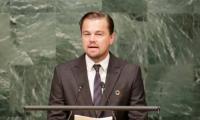electricity generation tunnel.
T4 comprises three units to add electricity 1410 MW to the national grid each unit will generate 470 MW. To a question Mr Mehmood said that T4 would be functional during high flow season, which is why its annual generation will not be more that that of Neelum-Jehlum hydropower project. Though the generation capacity of Neelum-Jehlum project is 969 MW, its annual generation will be more than 5000 GWh as it will be operational the whole year. However, the turbines of the Dam will become functional for hydro generation when Irsa (Indus river system authority) will place the indent (demand) of water releases on behalf of the four federating units, which is why the annual generation of T4 is less than the Neelum-Jehlum hydropower project.
Mr Siddiqi said that the total cost of T4 project is $928 million of which World Bank has extended $840 million loan that includes IDA loan of $440 million and IBRD loan of $400 million. The government’s share stands at $88 million.
The Terbela reservoir whose live water storage capacity is 9.679 million acres feet now has 6.434 MAF of water due sedimentation in the bed of the lake. He said that evacuation of silt piled up in the lake is a mission impossible; one option is to flush out the silt through spillways, but it will cause Damage to Ghazi Barotha Hydropower project and other huge structures built downstream Tarbela. The other option involves dredging of silt, which will cost a whopping $10-12billion whereas the total cost of the Dam was at just $2.85 billion. Moreover, disposal of the dredged silt would also be a problem. So the only option is to manage the delta of silt. “The sedimentation is managed ensuring the mountain of silt remains submerged in the water for which we are maintaining a certain level of water in the lake and this way of managing the sedimentation has been advised by a top panel of world experts.”
Mr Henrique, construction manager on behalf of T4 consultant hailing from Venezuela who is overseeing the construction activities told us that intakes for Tunnel 4 are being raised to avoid the flowing of the sedimentation in the intakes and letting the silt hit the turbines. He said that tunnel 4 has been dewatered for connection to raised tunnels. He said that site of powerhouse of T4 has been excavated by 90 percent and concrete work is under way. Mr Henrique also disclosed that about 28 percent construction work of T4 project has been completed. The penstock manufacturing facility has already been set up and on top of that switchyard extension foundation level has also been completed.
Explaining Tarbela-5 (T5) project, Zafar Memhood said that the PC-1 of the project would be approved by ECNEC (executive committee of national economic council) somewhere in April. The project will generate 1300 to 1400 MW of electricity by 2018. The study for the project has been completed with the financing of $2.9 million from World Bank. We have conditional offers of Euro 300 million for financing T5 from Austrian govt and M/s Voith Germany. In addition, Power China intends to finance civil works as well as transmission line through Chinese bank loan and on top of that the World Bank intends to shift anticipated $150 million from T4 to T5, Wapda chief said. To a question he said that annual generation of T5 will probably be equal to half of the annual generation of T4 as T5 power plant will generate electricity only for 60 to 70 days in a year during high flows season. However, the existing annual generation of the Dam stands at 15000 Gwhs.
Pharmacy Council of Pakistan building can be seen in this image. — pcpisb.gov.pk/FileIslamabad:The Pharmacy...
Federal Minister for Communications Abdul Aleem Khan presiding over a high-level National Highway Authority meeting...
A representational image of a police tape restricting an incident scene. — Reuters/FileIslamabad:In a tragic...
Federal Minister for Information Technology and Telecommunications Shaza Fatima Khawaja exchanging views with Khazar...
Federal Minister for Parliamentary Affairs Dr Tariq Fazal Chaudhry addresses an event on February 2, 2025. —...
This representational image shows teachers staging a protest rally and boycotting classes. — Facebook@Punjab...







